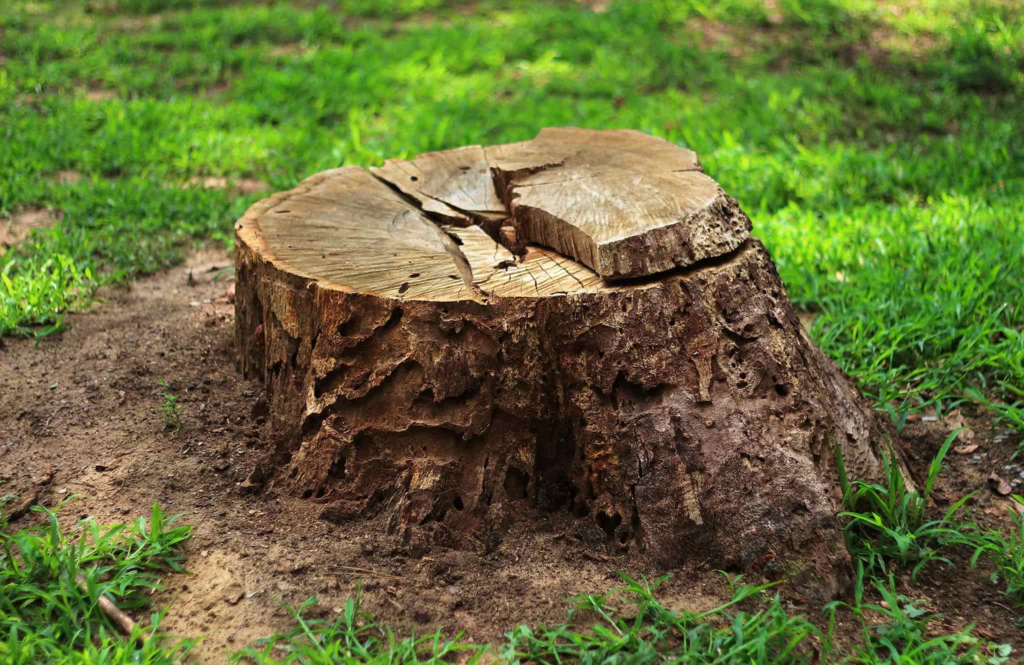Removing a tree stump can be a challenging but necessary task for maintaining your landscape. Whether a tree has become a hazard or needs to be cleared for other purposes, getting rid of the stump is essential. Here are four eco-friendly methods to remove a tree stump, focusing on natural decomposition or controlled processes.
1. Cover the Stump
This is the simplest and most natural method for dealing with a tree stump. By covering the stump, you can accelerate its natural decay process.
Steps:
- Securely cover the stump with a waterproof, opaque tarp.
- The tarp blocks sunlight and moisture, helping to decompose the stump over time.
- This method can take anywhere from 6 to 18 months to fully break down the stump, depending on environmental factors.
Pros:
- Non-invasive, environmentally friendly.
- Requires little effort, aside from initial setup.
Cons:
- Slow process.

2. Epsom Salt Method
Epsom salt is a natural desiccant that can speed up the decomposition of a tree stump by dehydrating it.
Steps:
- Drill several 1/2-inch holes into the stump.
- Fill these holes with Epsom salt, compressing it as you go.
- Add water to the stump without washing away the salt to help it absorb.
- Cover the stump with a lightproof, waterproof tarp to block sunlight.
Pros:
- Safe for the surrounding environment and soil.
- Relatively low environmental impact.
Cons:
- Can take a few months for the stump to become brittle and decompose.
3. Controlled Burning
Controlled burning is an option, though it requires caution and may be restricted in some areas. This method is faster but comes with safety risks.
Steps:
- Clear the area of flammable materials around the stump.
- Drill large, deep holes into the stump.
- Carefully fill these holes with kerosene.
- Light the stump with caution, monitoring it closely as it burns.
- Once burned, safely dispose of the remains.
Pros:
- Fast method of stump removal.
Cons:
- May be illegal or restricted in certain areas.
- Fire hazards, requires careful supervision and safety precautions.
4. Herbicide Application
This method is the quickest but can have environmental impacts. It involves using a herbicide designed for woody plants to kill the stump and stop regrowth.
Steps:
- If the stump isn’t freshly cut, make fresh wounds on the stump to help the herbicide penetrate.
- Apply herbicide (such as Triclopyr) using a paintbrush, ensuring it covers the entire stump surface.
- Follow the safety instructions on the herbicide packaging and wear protective gloves.
- Dispose of any used tools safely.
Pros:
- Quick and effective.
- Stops regrowth immediately.
Cons:
- Potential environmental impact on surrounding vegetation.
- Requires careful handling of chemicals.
Conclusion: Each method of stump removal comes with its own pros and cons. If you’re aiming for an eco-friendly approach, methods like covering the stump or using Epsom salt are great options. For faster results, controlled burning or herbicide application may be more suitable, though they come with added environmental and safety concerns. Always follow local regulations and consider the impact of your chosen method on the environment.
